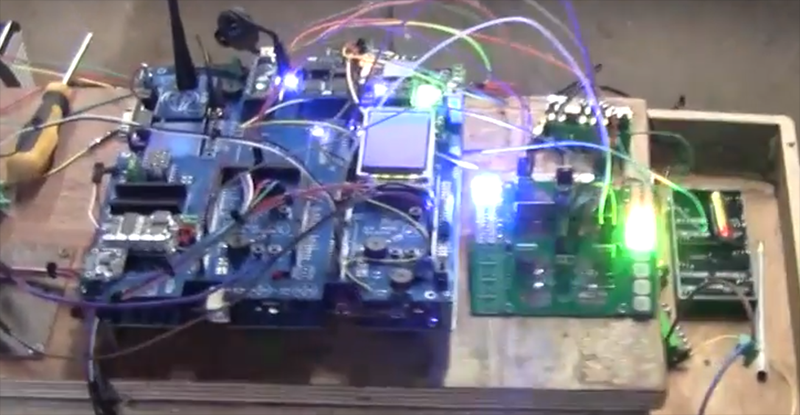Sometimes, we need devices to notify us of something. The oven timer is going off. Your phone has a push notification. The smoke detector battery is getting low. All of these problems can be solved with a buzzer or an LED. It’s a simple and cheap problem to solve.
But what if you need to know if something’s wrong with a diesel engine that throwing out 90 dB of noise? What if you’re not guaranteed to be around that engine? What if you need to tell everyone within a half mile that something is wrong. Again, LEDs and beepers, but the standard, off-the-shelf implementation isn’t going to cut it. You need massive amounts of buzzers and LEDs, and you’re going to need to drive them all with some reasonably high current. How do you solve that problem?
This is the problem [Tegwyn] had to solve for another one of his Hackaday Prize entries. The solution is what you would expect — buzzers and LEDs — but he’s putting some serious current behind these devices. There are, in fact, thermal considerations taken into account when you’re beeping this many buzzers.
The LEDs for this project are a handful of blindingly bright 1209 and 1206 SMD parts, and the buzzer is an obnoxiously loud SMD 97 dB buzzer. There are eight buzzers on this board. So, how do you drive these power-hungry devices? [Tegwyn] is using an L293E half-bridge motor driver, in a ‘Power-DIP’ package for relatively effective heat dissipation. Does it work? Oh, yes, and it’s very annoying. Take a look at the video below and judge for yourself. You can, indeed, make something louder and more annoying by adding more power.


















Was this at EMFCamp this weekend?
Looks rather familiar!
Yes, well observed, it was indeed at EMF camp.
When I have to hear something a half mile away, I use my 1930’s vintage air raid siren. It has a 5HP 220V motor on it, but I spin it up with 110. I love the way it goes from chopping the air to roaring over a few seconds. She takes a good 15 seconds to spin up. i would guess you could hear it miles away.